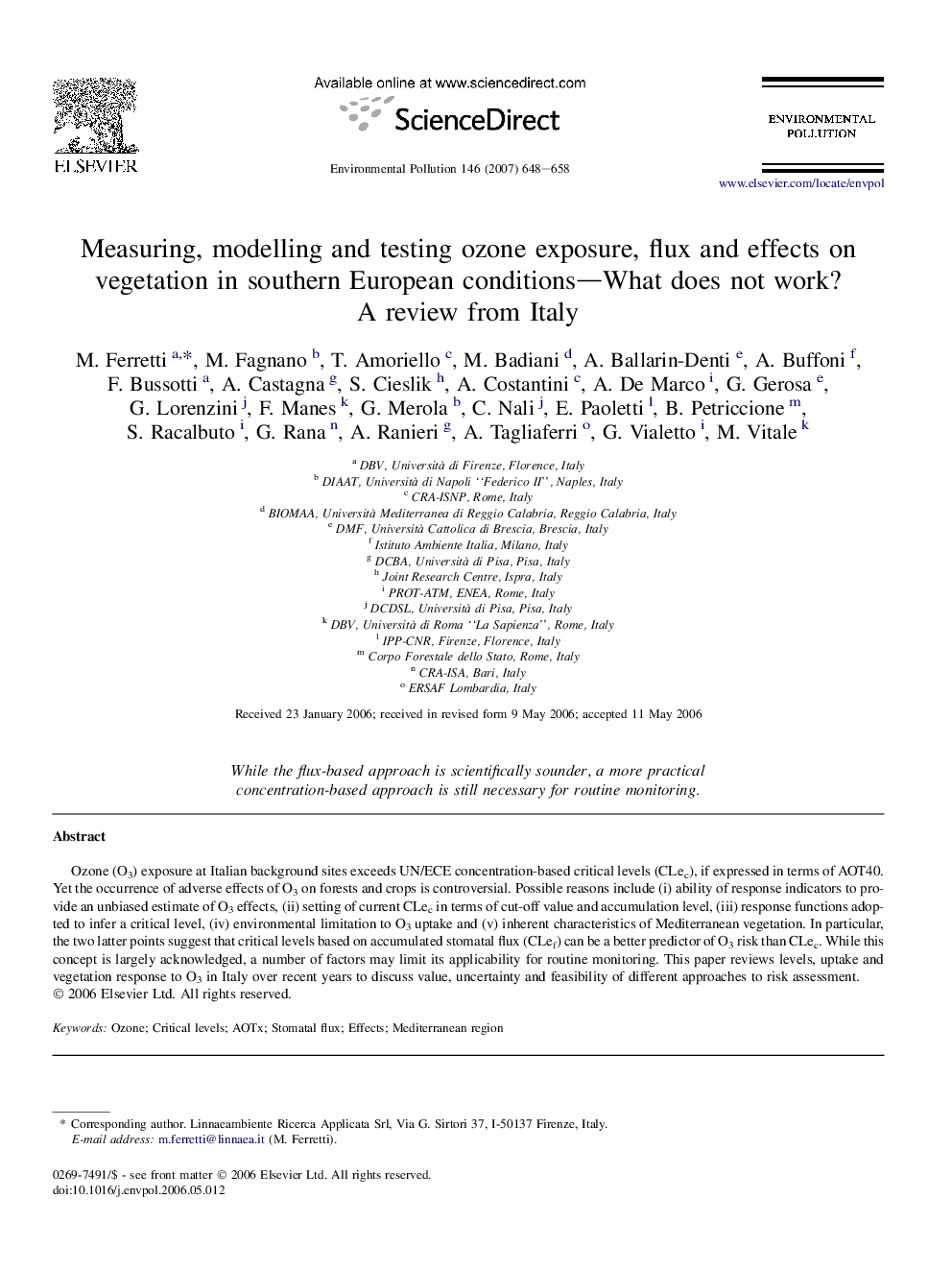| Article ID | Journal | Published Year | Pages | File Type |
|---|---|---|---|---|
| 4427286 | Environmental Pollution | 2007 | 11 Pages |
Ozone (O3) exposure at Italian background sites exceeds UN/ECE concentration-based critical levels (CLec), if expressed in terms of AOT40. Yet the occurrence of adverse effects of O3 on forests and crops is controversial. Possible reasons include (i) ability of response indicators to provide an unbiased estimate of O3 effects, (ii) setting of current CLec in terms of cut-off value and accumulation level, (iii) response functions adopted to infer a critical level, (iv) environmental limitation to O3 uptake and (v) inherent characteristics of Mediterranean vegetation. In particular, the two latter points suggest that critical levels based on accumulated stomatal flux (CLef) can be a better predictor of O3 risk than CLec. While this concept is largely acknowledged, a number of factors may limit its applicability for routine monitoring. This paper reviews levels, uptake and vegetation response to O3 in Italy over recent years to discuss value, uncertainty and feasibility of different approaches to risk assessment.
